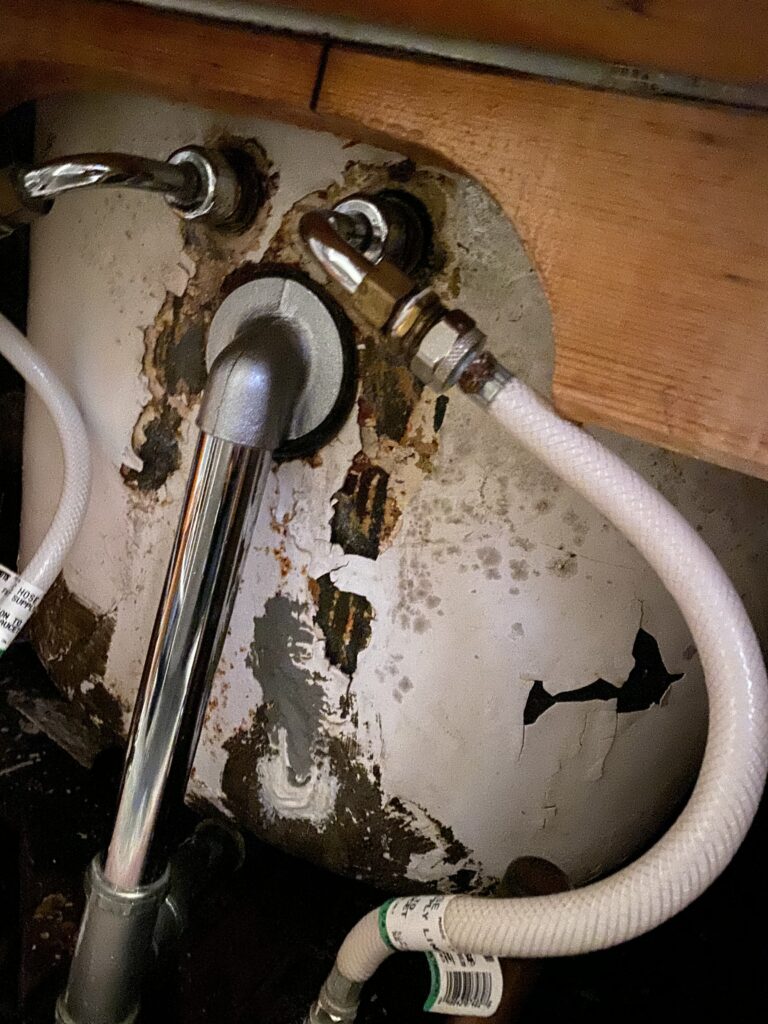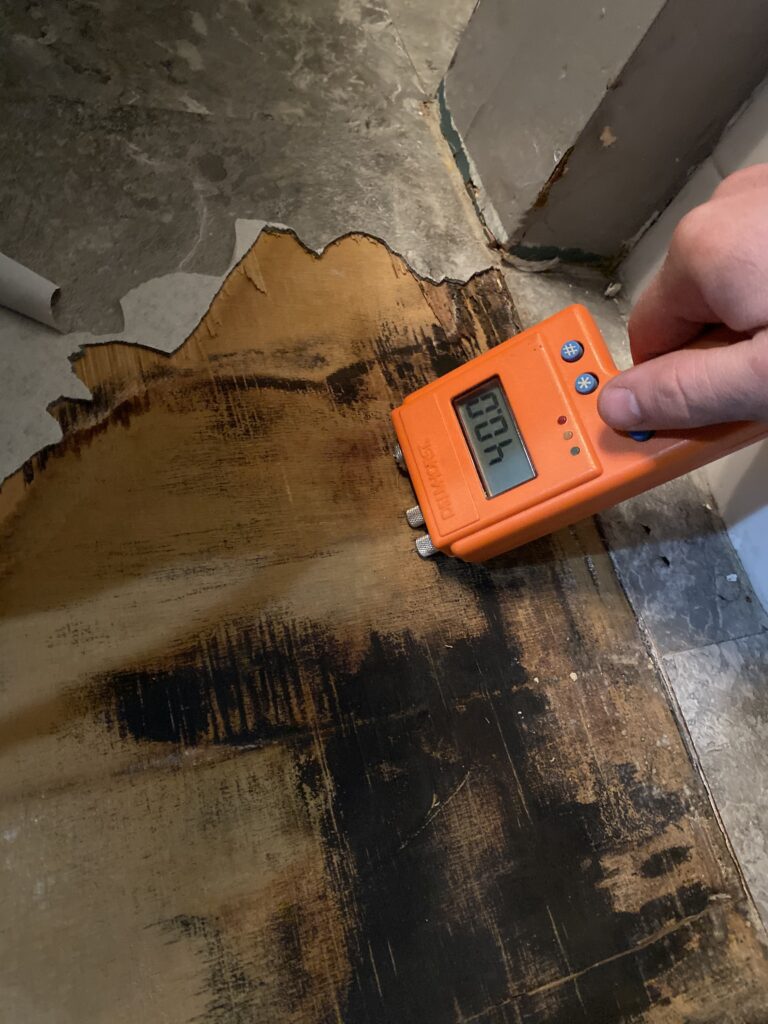We’ve been to numerous homes that have had leaks and water damage hidden behind walls. More often than not, the water damage is hidden behind bathroom walls, usually from loose or broken water connections. If ignored, water-damaged areas become the perfect environment for mold and mildew.
Do you suspect that you may have an area with hidden water damage in your home? Here are a few warning signs.


Mold & Mildew
Mold thrives on moist, dark areas – and a pipe, which is typically hidden in a wall or under flooring, provides the perfect starting point for mold or mildew if the pipe springs a leak. While mold and mildew are obvious signs of water damage, they aren’t always easy to spot, for example, behind broken tiles, drywall or painted surfaces.
While it’s normal for a little mildew to occur wherever water accumulates, such as in the corner of a shower, mold or mildew on non-shower walls or in corners of the bathroom is a clear sign that water is leaking somewhere and finding its way to those areas. A leaking pipe provides plenty of moisture, so the longer it takes you to detect and fix the leak, the easier and faster mold will grow.
Musty Smell
While a proper ventilation system can remove moisture from the air after you take a bath or shower, the musty smell of mold and mildew can remain in the air. If, after thoroughly cleaning your bathroom, you still notice a musty or earthy smell, it’s likely that you have hidden leaks. Because the water is hidden, it never has a chance to dry .
Damaged Paint or Wallpaper
A wall with blistering paint or wallpaper is another sign of bathroom leaks.
In most cases, steam from the occasional hot shower shouldn’t cause paint or wallpaper to come loose. When water and moisture get between the wall and paint, they eliminate the bond and begin to separate the two, causing the paint to rise from the wall and fall off in pieces. The same goes for wallpaper: The adhesive used to bond the paper to the wall becomes less sticky and the paper begins to come loose.
Dripping Faucets & Slow Drains
A dripping faucet may not seem like a big deal at first, but over time it can lead to water damage in your bathroom. The same goes for slow draining water. A clogged drain can cause pressure and bacteria to build up inside your pipes. Over time, the blockage may cause mold growth or even a rupture if the water has no where else go. We recommend calling a licensed plumber to inspect the issue before it becomes a bigger problem.
Damaged, Warped Walls
A wall that is warped or stained for no reason is a clear sign that you have a plumbing leak in your bathroom.
When drywall is exposed to moisture, it becomes soft and begins to bubble, ultimately warping and breaking into pieces. If the leak reaches the ceiling, it causes it to sag and possibly leak some of the water that has accumulated.
Spongy, Damaged Floors
A bathroom floor rarely suffers water damage unless there is a leak. If your bathroom floor is buckling, cracking or beginning to stain for no obvious reason, chances are hidden water is the culprit. The water could be from a pipe directly underneath the floor, or it could have traveled there from another area.
Depending on the type of flooring in your bathroom, moisture can make it feel spongy or soft. Tile may lose its adhesion and become loose, allowing you to easily remove a piece and possibly expose water or moisture underneath it. You will also often find a damp sub-floor.
If you think that you have a hidden leak or hidden water damage in your home, call us today. The longer you wait to call, the more likely the damage will spread to other areas of your home.
Call us at (269) 910-9500 or request a consultation online.
